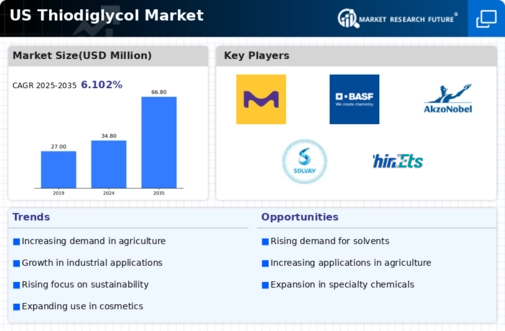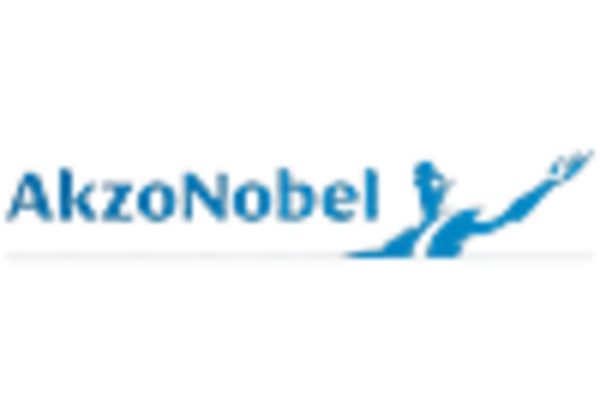Expansion of End-Use Industries
The thiodiglycol market is significantly influenced by the expansion of end-use industries such as pharmaceuticals, agriculture, and cosmetics. In the pharmaceutical sector, thiodiglycol is utilized as a solvent and stabilizer in drug formulations, which is expected to grow as the industry focuses on innovative therapies. The agricultural sector also relies on thiodiglycol for the production of pesticides and herbicides, with the market projected to reach $5 billion by 2026. Additionally, the cosmetics industry is increasingly incorporating thiodiglycol in formulations for its moisturizing properties. This diversification across multiple sectors indicates a robust growth trajectory for the thiodiglycol market, as it adapts to the needs of various applications.
Increased Focus on Product Quality
Quality assurance has become a pivotal factor in the thiodiglycol market, as manufacturers strive to meet stringent quality standards. The demand for high-purity thiodiglycol is on the rise, particularly in industries such as pharmaceuticals and food processing, where product integrity is paramount. Regulatory bodies are imposing stricter guidelines, which compel manufacturers to enhance their production processes. This focus on quality not only ensures compliance but also fosters consumer trust, thereby driving sales. As a result, the thiodiglycol market is likely to witness a shift towards higher-quality products, which may lead to increased production costs but ultimately benefits the market by establishing a reputation for reliability and excellence.
Rising Demand in Chemical Manufacturing
The thiodiglycol market is experiencing a notable increase in demand driven by the chemical manufacturing sector. Thiodiglycol serves as a critical intermediate in the production of various chemicals, including solvents and plasticizers. As the US chemical industry continues to expand, with a projected growth rate of approximately 3.5% annually, the need for thiodiglycol is likely to rise correspondingly. This growth is further fueled by the increasing application of thiodiglycol in the formulation of specialty chemicals, which are gaining traction in various industries. Consequently, the thiodiglycol market is poised to benefit from this upward trend, as manufacturers seek to enhance their product offerings and meet the evolving demands of end-users.
Technological Innovations in Production
Technological advancements in the production of thiodiglycol are reshaping the market landscape. Innovations such as improved synthesis methods and more efficient extraction techniques are enabling manufacturers to produce thiodiglycol at lower costs while maintaining quality. These advancements are crucial in a competitive market where profit margins are often tight. Furthermore, the integration of automation and digital technologies in production processes is enhancing operational efficiency, reducing waste, and minimizing environmental impact. As these technologies become more prevalent, the thiodiglycol market is expected to experience a transformation that not only boosts productivity but also aligns with sustainability goals, appealing to environmentally conscious consumers.
Growing Awareness of Environmental Impact
The thiodiglycol market is increasingly affected by the growing awareness of environmental issues among consumers and businesses alike. As sustainability becomes a priority, companies are seeking eco-friendly alternatives and practices in their operations. Thiodiglycol, being a versatile chemical, is being evaluated for its environmental footprint, leading to a demand for greener production methods. This shift is prompting manufacturers to invest in sustainable practices, such as using renewable resources and reducing emissions during production. Consequently, the thiodiglycol market is likely to evolve, with a focus on sustainability that not only meets regulatory requirements but also aligns with consumer preferences for environmentally responsible products.

















Leave a Comment